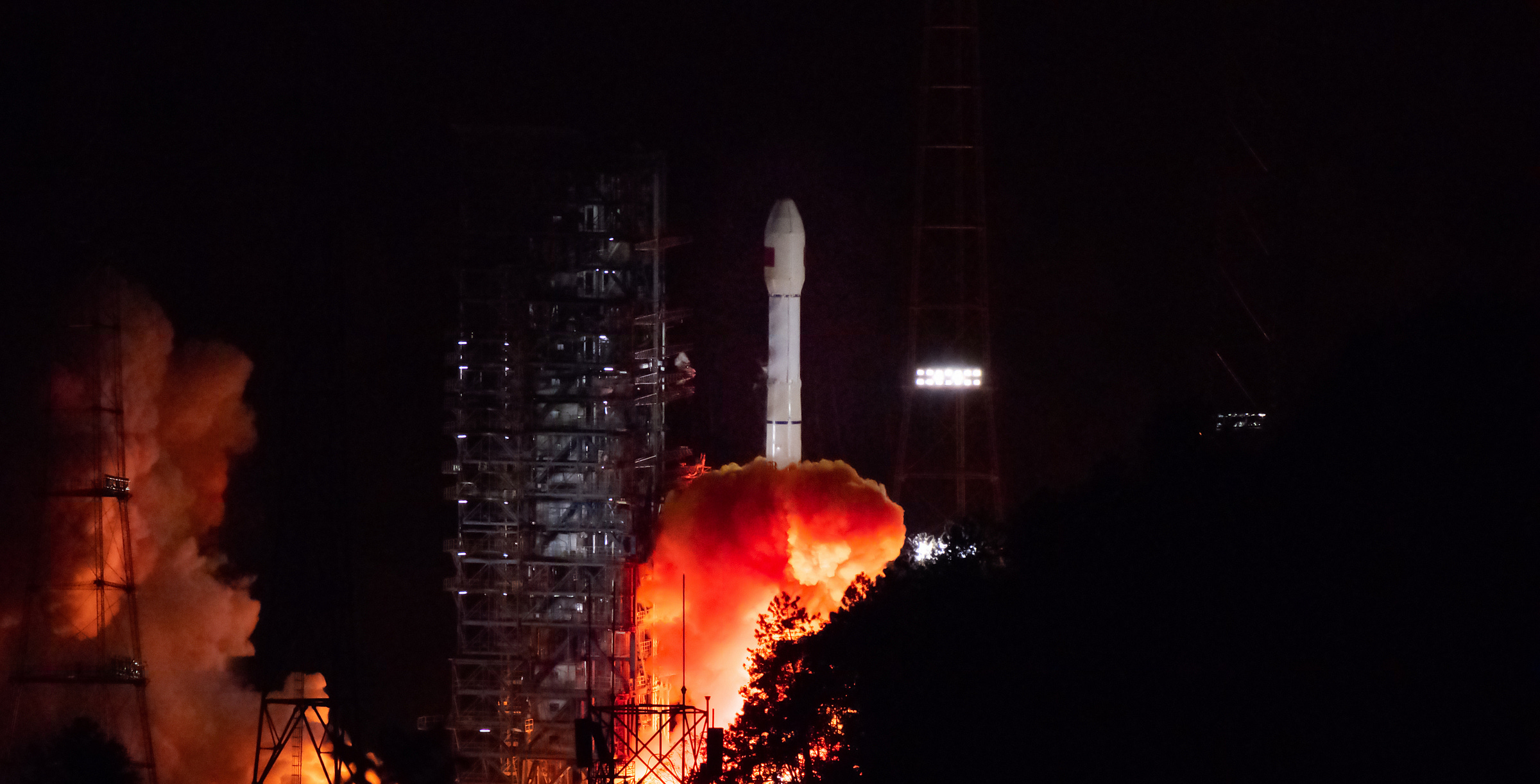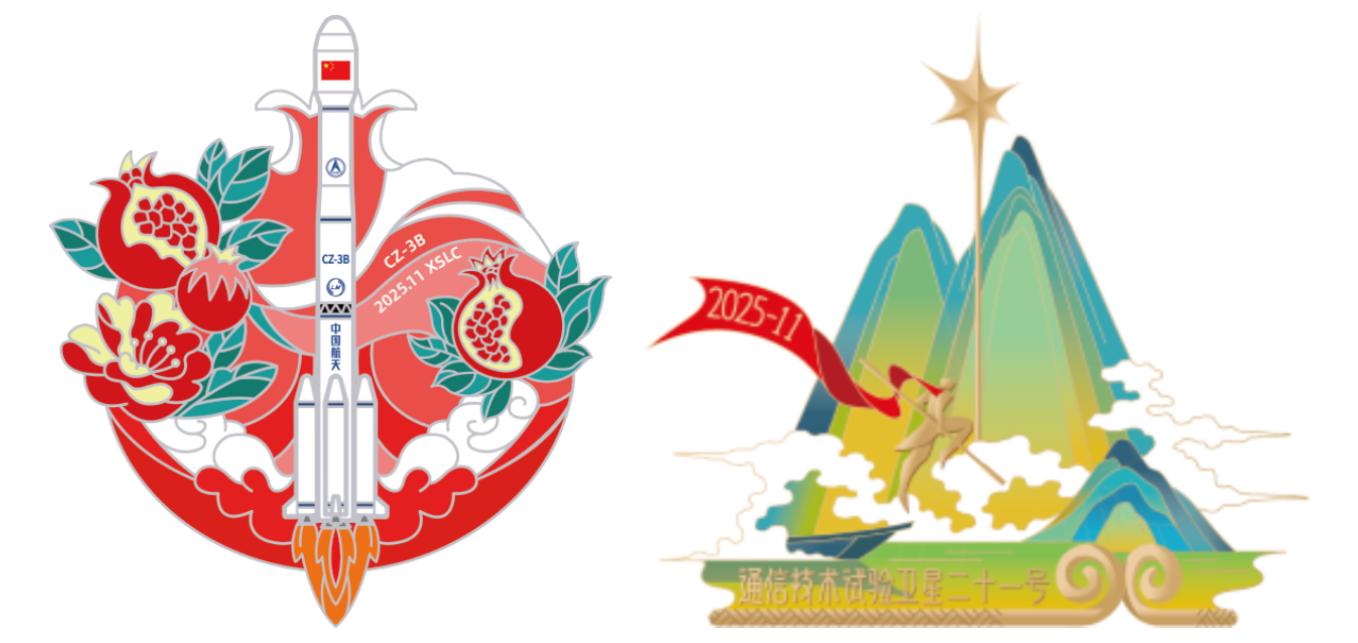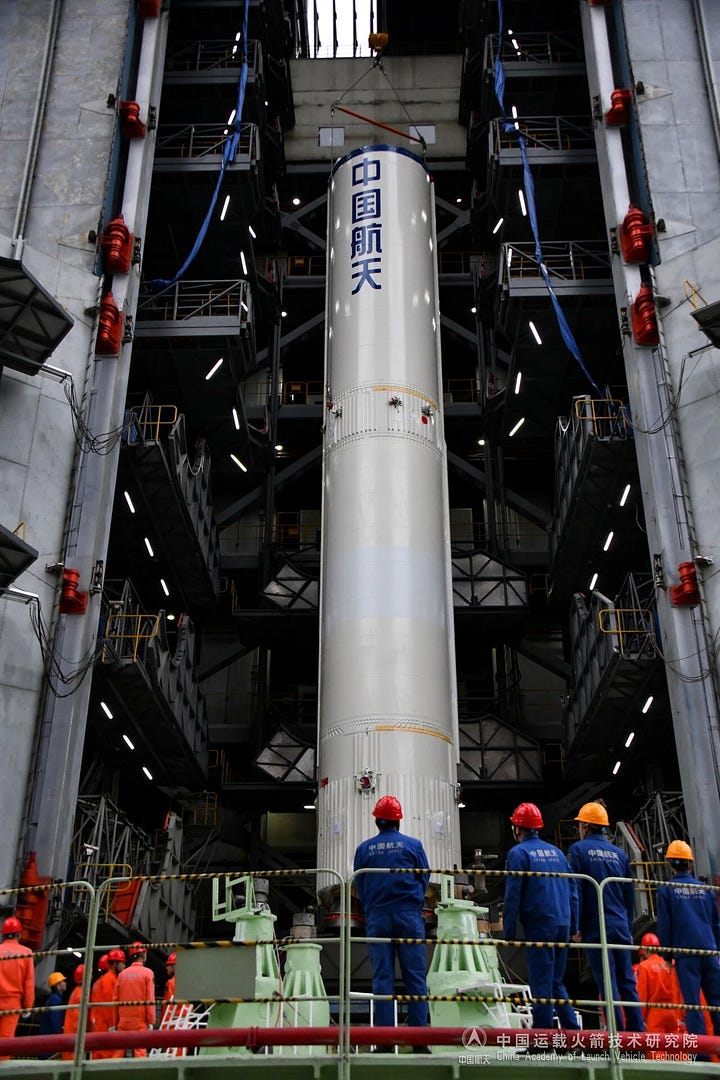Seventh TJSW Spacecraft of 2025 Launched via Xichang Mission [Long March 3B/E]
This year’s most prolific addition to geostationary space has taken an unusual path for its latest launch.

At 18:55 pm China Standard Time (10:55 am Universal Coordinated Time) on November 21st, a Long March 3B/E lifted off from Launch Complex 2 at the Xichang Satellite Launch Center, heading for beyond low Earth orbit on a southeast flight path with a single payload.
Riding atop of the rocket as the sole payload was the TJSW-21 spacecraft (通信技术试验卫星二十一号), known as Communication Technology Experimental Satellite-21 in English. This TJSW spacecraft was claimed by the Shanghai Academy of Spaceflight Technology as being developed by their teams.
Uses for the TJSW-21 spacecraft are reported to be communications, radio, television, and data transmission. Other tasks are set to be for verifying multi-band high-speed throughput communications technologies.
Six other TJSW satellites have been launched this year, all toward a geostationary transfer orbit, by older and newer Long March vehicles. Starting in January, TJSW-14 was delivered by a Long March 3B/E, then in March, TJSW-15 rode atop another Long March 3B/E while TJSW-16 hitched a ride on a Long March 7A, which was then followed by TJSW-17 on a Long March 3B/E, and TJSW-19 flew on another Long March 3B/E, finally with TJSW-20 launched atop of a Long March 5 in October.

Eleven Long March 3B/E’s have flown this year with today’s mission, along with two Long March 3C/E’s in May and September, all successfully. Toward the end of last year, the China Academy of Launch Vehicle Technology stated that they were aiming to launch the Long March 3B/E over a dozen times as part of a period of high-frequency launches. With launches of the rocket proven to be able to be conducted every two weeks, two more Long March 3B/E’s may fly before the end of the year.
Both the China Academy of Launch Vehicle Technology’s and the China Aerospace Science and Technology Corporation’s post-launch blog posts said that teams at Xichang have continuously prepared Long March 3B/E launch missions in parallel while continuing to find optimizations to that process.
Today’s mission was the 112th launch of a Long March 3B vehicle, and the 609th launch of the Long March launch vehicle series. This was also the 75th launch from China in 2025.
Liftoff video via Cosmic Penguin on Bluesky, in-flight ascent spotting via 高仿我号干什么真没礼貌 and 航天面面观 on Weibo.
Check out the previous Long March 3B/E launch
New Mapping Spacecraft Delivered From Xichang [Long March 3B/E]
On October 26th at 11:55 am China Standard Time (03:55 am Universal Coordinated Time), a Long March 3B/E lifted off from Launch Complex 3 at the Xichang Satellite Launch Center, flying into sun-synchronous orbit with one satellite.
What is the Long March 3B/E?
This section is for those less familiar with China’s Long March series of launch vehicles.
The Long March 3B is an older-generation geostationary orbit workhorse of the China Academy of Launch Vehicle Technology. The first two stages and four boosters of the rocket burn Dinitrogen Tetroxide and Unsymmetrical Dimethylhydrazine, with liquid hydrogen and liquid oxygen in the third-stage.
Over the rocket’s almost twenty-eight-year launch history, two versions of the vehicle have flown, the 3B and 3B/E. Since 2012, only the 3B/E variant has flown due to its increased payload capacity. The payload capacity of the launch vehicle is currently as follows:
11,500 kilograms to low Earth orbit
7,100 kilograms to a sun-synchronous orbit
5,500 kilograms into a geostationary transfer orbit
2,000 kilograms into geostationary orbit
The first-stage is powered by four YF-21C engines that burn Dinitrogen Tetroxide and Unsymmetrical Dimethylhydrazine to generate 302 tons of thrust, while the boosters are powered by one YF-25 engine burning the same fuel to generate 72 tons of thrust each. Combined the four boosters and first stage generate a thrust of 590 tons. The second stage is powered by one YF-22E and four YF-23F vernier engines that also burn Dinitrogen Tetroxide and Unsymmetrical Dimethylhydrazine to generate 81 tons of thrust. The third-stage is powered by two YF-75 engines that burn liquid hydrogen and liquid oxygen to generate 17 tons of thrust.
On the launch pad, the Long March 3B/E is 56.3 meters tall and weighs 458,970 kilograms when fully fuelled. The first and second-stage have a diameter of 3.35 meters, while the third-stage has a diameter of 3 meters, along with the four boosters diameter of 2.25 meters, and the fairing has a diameter of 4.2 meters.
So far, every Long March 3B launch has occurred from the Xichang Satellite Launch Center, in the south of Sichuan province.





![New Mapping Spacecraft Delivered From Xichang [Long March 3B/E]](https://substackcdn.com/image/fetch/$s_!FZge!,w_1300,h_650,c_fill,f_auto,q_auto:good,fl_progressive:steep,g_auto/https%3A%2F%2Fsubstack-post-media.s3.amazonaws.com%2Fpublic%2Fimages%2F86eb0075-2c15-4897-b044-136fc6118531_6000x3205.jpeg)
